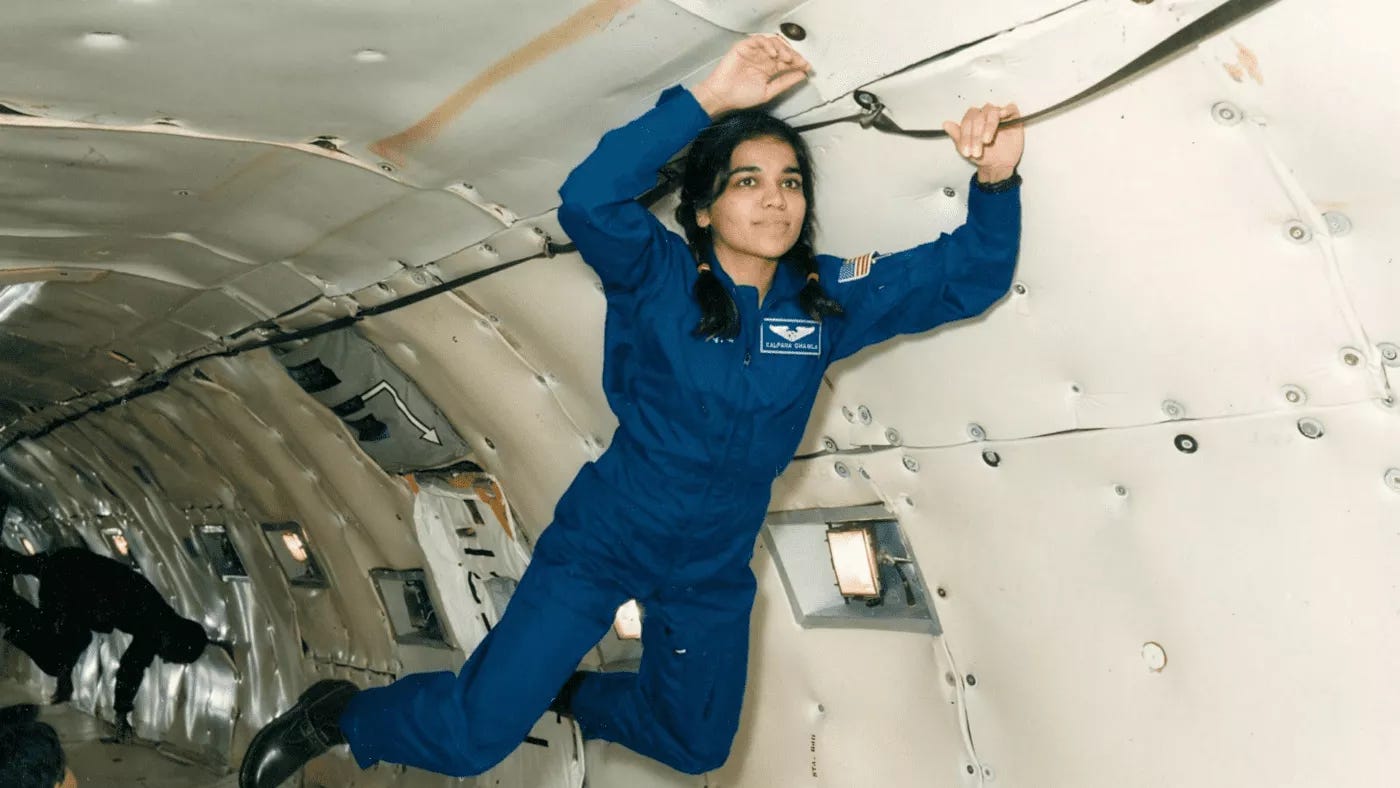Reaching for the Stars: The Legacy of Kalpana Chawla in Space Exploration
by Pooja Tolia, The Sky Explorers
(Image Source: leverageedu.com)
2023 marks 20 years to Kalpana Chawla’s untimely demise but most Indians still have her fresh in their memory and still think of Kalpana Chawla as the first name on their minds when it comes to anything related to Astronomy or Space Sciences. There are many reasons why we are not likely to tire of her name in the near future! First and foremost she was the first woman of Indian origin to be an astronaut and fly in space. That alone has inspired generations ahead of her to dream and reach for the stars!
Kalpana had a humble beginning in the small town of Karnal in Haryana, India. But she dreamt big and eventually after finishing her Bachelor's in aeronautical engineering from Punjab Engineering College, Chandigarh, and a Master's in aerospace engineering from the University of Texas at Arlington she went on to join NASA in 1994 as a Research Scientist. After initial rejection, she finally got into the Astronaut program at NASA and flew into Space for the first time in 1997.
Kalpana’s legacy in Space Sciences is not limited to being the first Indian-origin woman in Space, she made many contributions to the field through her research. Some of them can be summed up as follows:
(Image Source: Wikimedia Commons)
Research in microgravity:
During her two space missions, she conducted experiments in microgravity, which is the condition of very weak or zero gravity that exists in orbit around the Earth. These experiments focused on studying the behaviour of fluids and combustion in microgravity, which provided valuable insights into the behaviour of these phenomena in space.
One of the experiments that Kalpana worked on was the Combustion Module-2 (CM-2) experiment, which studied the behaviour of flames in microgravity. The experiment was designed to investigate the effects of gravity on combustion processes and to identify the mechanisms responsible for the differences in flame behaviour between Earth and space.
Mapping of stars:
As an aerospace engineer, Kalpana worked on the development of software for simulating the flow of air around aircraft. She also contributed to the mapping of stars using data from the Hubble Space Telescope. Chawla's work involved developing algorithms and software tools to analyze the images captured by the telescope, which helped in identifying and cataloguing stars in our galaxy and beyond.
One of the most significant contributions that she made to the mapping of stars was her work on the Hubble Deep Field project. This project involved pointing the Hubble Space Telescope at a seemingly empty patch of sky and capturing images over several days. The images revealed thousands of galaxies, some of which were among the earliest and most distant ever observed.
Research on space shuttle technology:
Kalpana was involved in the research and development of space shuttle technology, which helped in advancing the field of space exploration. She worked on a number of projects related to the space shuttle, including the development of software for flight simulation and the testing of flight control systems.
One of the notable projects that Chawla worked on was the Space Shuttle Main Engine (SSME) controller. The SSME is the rocket engine that powers the space shuttle, and Chawla was involved in the development of the software that controls the engine's operation.
Additionally and more importantly Kalpana was also a strong advocate for science education. She encouraged young people, especially girls, to pursue careers in science and technology. Her passion & perseverance to reach for the stars in combination with her scientific contributions to the field are what make her unforgettable even today!
To all those who dream of a path to the stars, we leave you with her words,
"The path from dreams to success does exist. May you have the vision to find it, the courage to get onto it, and the perseverance to follow it."
(Image Source: NASA)





